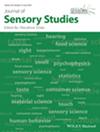Polarized projective mapping (PPM) employs reference samples called poles, positioned in the sensory space, to which samples are compared. This structure enables comparisons across sessions. Selecting the right poles is therefore critical for accurate and reliable comparisons. The current study examined whether simple poles (single fruit juices) or complex poles (fruit juice blends) better represented the sensory space in PPM using a trained panel (n = 12). Thirteen commercial fruit juices, including single juices and blends, were assessed using projective mapping to understand product diversity and select three simple and three complex poles. PPM was then conducted using simple poles in one session and complex poles in another. Six of the thirteen juices used in PPM and three new juices were evaluated to validate the results. Findings indicated that while both simple and complex poles described the product space, simple poles were more able to capture the diversity of the sensory space.
The study's insights into appropriate pole selection in PPM for complex product sets contribute to the technique's usability and robustness. The guidance on pole selection ensures selected poles anchor the product space, enabling meaningful comparisons across sessions. The finding that simple poles are able to describe complex product sets may assist in minimizing fatigue, a common challenge in evaluating complex products like wine, spirits, and cider. By addressing the unique challenges of complex products, this research enhances the useability of PPM as a valuable tool for comprehensively evaluating sensory characteristics in product categories prone to fatigue and limited consumption.


